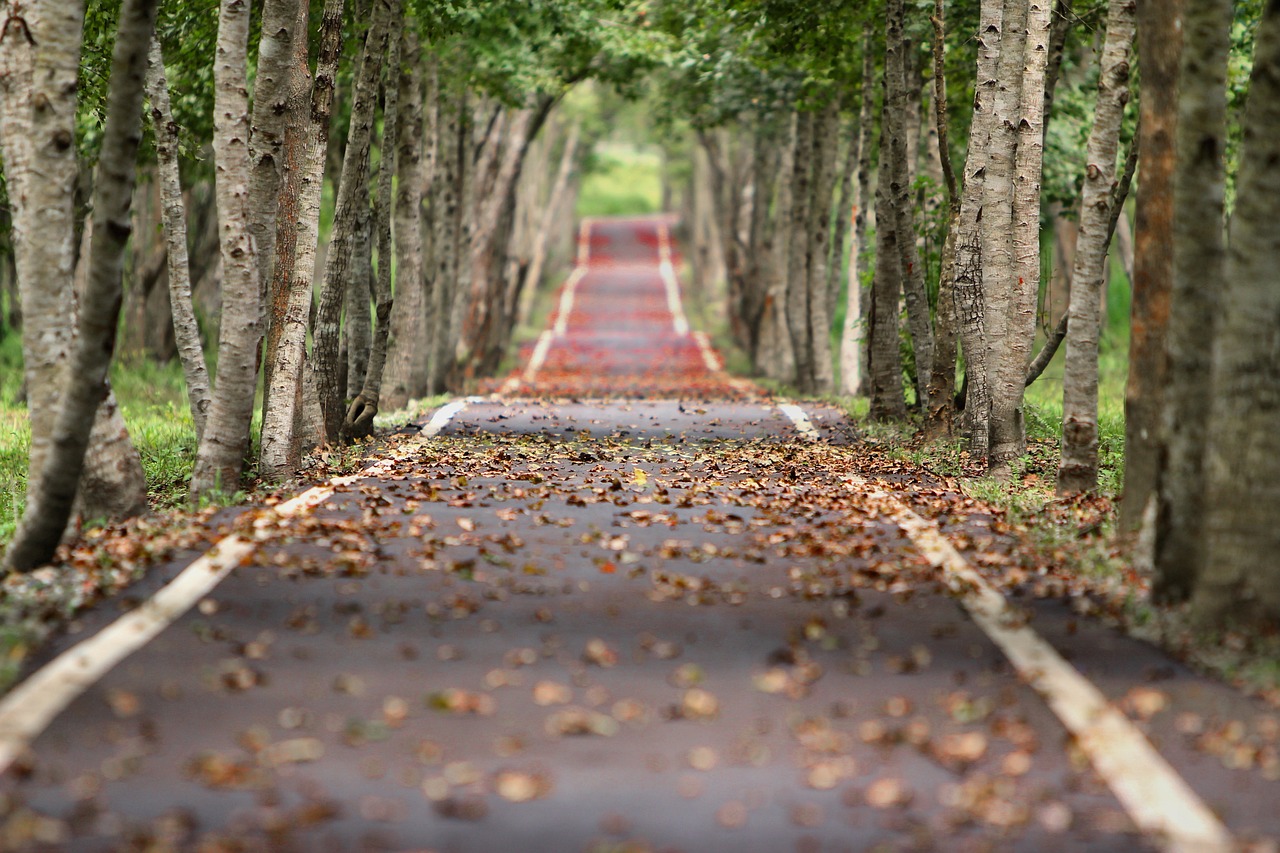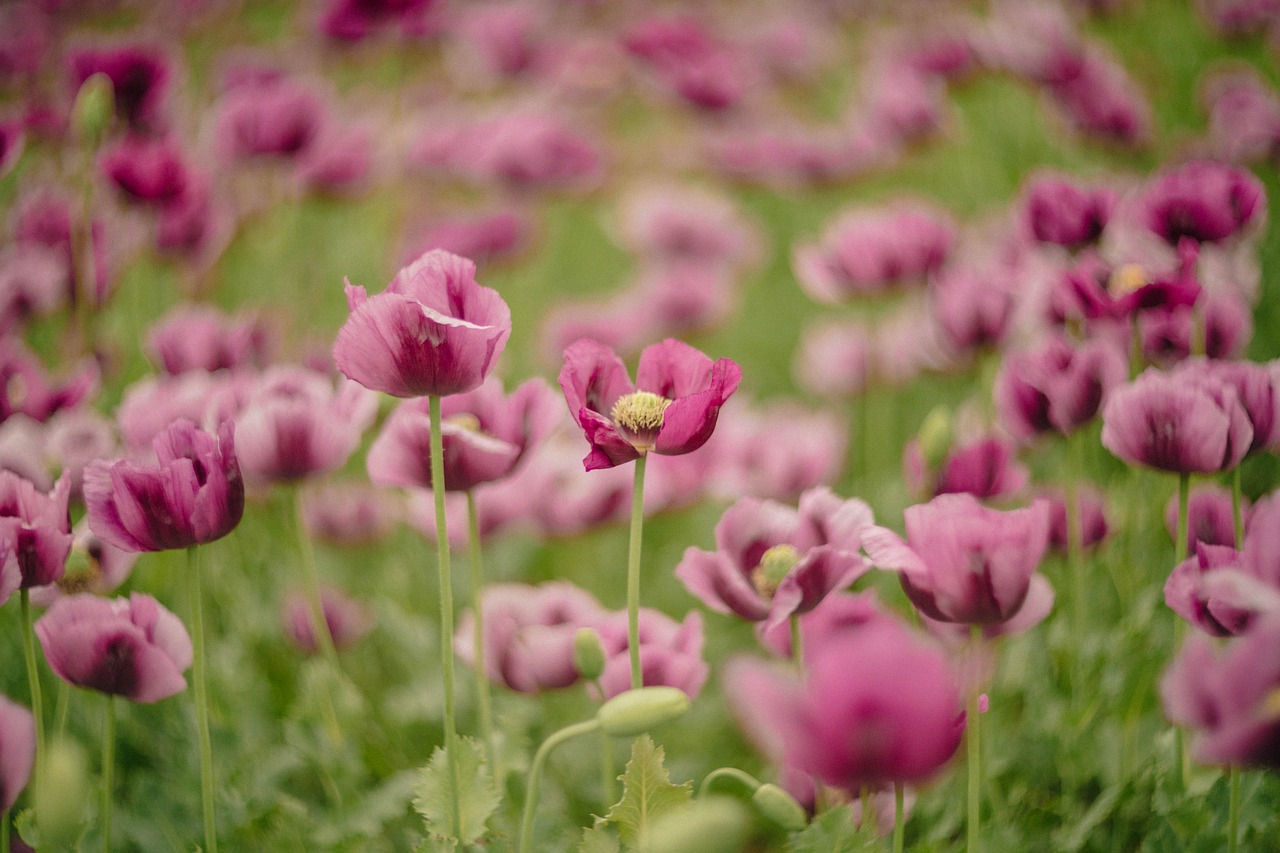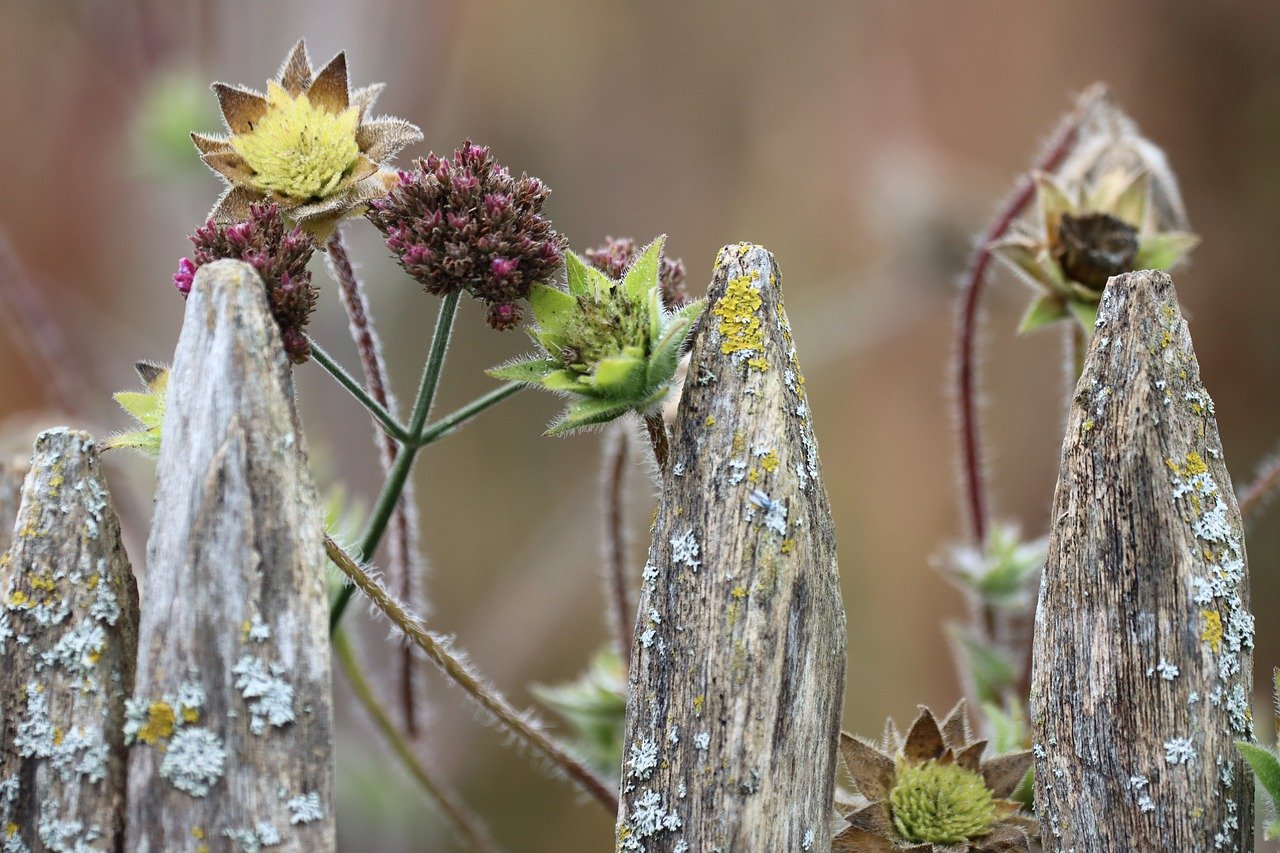Designing Beautiful Borders for Your Garden Path
Creating a stunning garden path is like painting a masterpiece; every detail matters. The borders of your garden path are not just functional—they're the frame that highlights the beauty of your outdoor space. Imagine stepping onto a path that is bordered by vibrant flowers, rustic stones, or sleek metal edges. It’s not just a way to guide your feet, but a journey for the eyes. In this article, we will explore various techniques and ideas to enhance your garden path with beautiful borders that add both visual appeal and functionality.
When it comes to designing borders, the materials you choose are crucial. Think of materials as the building blocks of your garden's personality. Are you aiming for a classic look, or something more modern? Here are some popular options:
- Stone: Timeless and durable, stone borders can create a natural look that blends seamlessly with the landscape.
- Wood: Offering warmth and charm, wooden borders are perfect for rustic gardens but may require more maintenance.
- Metal: Sleek and contemporary, metal edging can provide a sharp contrast to the greenery, adding a modern twist.
Choosing the right material will depend on your garden style and the overall aesthetic you wish to achieve. Consider the long-term care and durability of each option to ensure your borders remain stunning through the seasons.
Plants are the heartbeat of any garden, and incorporating them into your borders can add life, color, and texture. When selecting plants for your garden path borders, consider factors like height, bloom time, and maintenance. You want a mix that not only looks great but also thrives in your garden's conditions. For instance, taller plants can provide a backdrop, while shorter ones can fill in the front.
Understanding the difference between perennials and annuals is essential for creating a dynamic border. Perennials return year after year, providing a stable foundation for your garden. Annuals, on the other hand, offer a burst of color that changes each season. Mixing both can create a lively and ever-evolving landscape.
If you're a busy gardener, low-maintenance plants are your best friends. Consider hardy options like sedums or lavender, which require minimal care while still providing stunning visuals. These plants can thrive in various conditions, making them perfect for those who want beauty without the hassle.
Creating a border that offers seasonal interest is key to maintaining visual appeal throughout the year. Opt for plants that bloom at different times, ensuring that your garden path remains vibrant no matter the season. For example, spring bulbs can give way to summer blooms, followed by autumn foliage that adds richness before winter sets in.
Effective edging can define your garden path and enhance its visual appeal. Clean lines can make all the difference in how your garden is perceived. Techniques like using bricks, stones, or even wood can create a defined boundary that separates your path from the rest of the garden. Consider the following edging techniques:
- Curved Edging: Soft curves can create a more natural look, guiding the eye along the path.
- Straight Edging: For a modern touch, straight lines can create a clean and structured appearance.
- Layered Edging: Combining different materials can add depth and interest to your borders.
Each technique offers a unique way to enhance the beauty of your garden path, so choose one that resonates with your style.
A cohesive color scheme can unify your garden path and borders, creating a harmonious look. When selecting colors, consider how they complement the existing plants and structures in your garden. A well-thought-out color palette can make your garden feel inviting and cohesive.
Using contrasting colors can make your borders stand out dramatically. Imagine deep purple flowers against bright yellow blooms—such combinations can create a stunning visual impact. The key is to balance the colors so they enhance rather than clash with each other.
On the other hand, monochromatic designs offer elegance and simplicity. By using varying shades of a single color, you can create a sophisticated look that is both calming and beautiful. Think of a border filled with different hues of blue, from soft pastels to deep navy—it's a visual delight that can elevate your garden path.
Incorporating lighting into your garden path borders can enhance their beauty at night. Imagine your path glowing softly, guiding you through your garden like a gentle beacon. Consider options like solar lights or LED strips that can be integrated into your borders, providing both safety and ambiance. Not only does lighting add functionality, but it also creates a magical atmosphere that can transform your garden after sunset.
1. What materials are best for garden path borders?
The best materials depend on your style and maintenance preferences. Stone, wood, and metal are popular choices, each offering unique aesthetics and durability.
2. How can I ensure my borders look good year-round?
Choose a mix of perennials and annuals that bloom at different times of the year, and consider incorporating plants with varying foliage colors for year-round interest.
3. What are some low-maintenance plant options for borders?
Consider hardy plants like sedums, lavender, or ornamental grasses, which require minimal care while still providing beauty.
4. How do I choose a color scheme for my garden path?
Select colors that complement your existing plants and structures. You can opt for contrasting colors for a bold look or a monochromatic scheme for a more elegant feel.

Choosing the Right Materials
When it comes to designing stunning borders for your garden path, the materials you choose play a pivotal role in both aesthetics and functionality. The right materials can enhance the overall look of your garden while ensuring durability against the elements. Let’s dive into some popular options that can suit various styles and preferences.
First up, we have stone, which has been a classic choice for centuries. Whether you opt for natural flagstones, cobblestones, or slate, stone can provide a rustic charm and a timeless feel to your garden path. Not only is stone incredibly durable, but it also comes in a variety of colors and textures, allowing you to create a unique look that reflects your personal style. Imagine walking down a path lined with smooth river stones, each one telling a story of its own!
Next, let’s talk about wood. Wooden borders can add warmth and a natural touch to your garden. You can use treated lumber, cedar, or even reclaimed wood for a more eco-friendly option. Wooden borders are versatile and can be shaped to fit any garden layout. However, keep in mind that wood requires some maintenance to prevent rotting and weathering. Think of wooden borders as the cozy blanket of your garden—inviting and comforting, but needing a little care to stay warm!
Another excellent material choice is metal. From aluminum to corten steel, metal borders can create a sleek and modern look. They are particularly effective in contemporary gardens, where clean lines and minimalism are key. Metal is also highly durable and can withstand harsh weather conditions. Imagine the striking contrast of a shiny aluminum border against vibrant flowers—it's a visual feast!
To help you choose the right material for your garden path borders, here’s a quick comparison table:
| Material | Durability | Maintenance | Aesthetic Appeal |
|---|---|---|---|
| Stone | High | Low | Natural, Timeless |
| Wood | Medium | Moderate | Warm, Inviting |
| Metal | High | Low | Modern, Sleek |
In conclusion, the materials you select for your garden path borders can significantly influence the overall vibe of your outdoor space. Whether you lean towards the rustic charm of stone, the warmth of wood, or the sleekness of metal, each option brings its own unique character. So, take your time, consider your garden's style, and choose materials that not only look great but also fit your lifestyle. After all, a well-designed border is like the icing on the cake of your garden—making everything more delightful!

Incorporating Plants
When it comes to designing beautiful borders for your garden path, incorporating plants is like adding the finishing touches to a masterpiece. Not only do plants bring life and color to your outdoor space, but they also create a welcoming atmosphere that draws you in. Imagine strolling down a path flanked by vibrant blooms and lush greenery; it’s an experience that can elevate your gardening game to a whole new level. But how do you choose the right plants for your borders? Let’s dive into some key considerations that will help you make the best selections.
First and foremost, you’ll want to think about the height of the plants. Taller plants can create a beautiful backdrop, while shorter ones can act as a charming foreground. It’s all about layering! For instance, consider planting tall sunflowers or hollyhocks at the back of your border, while delicate petunias or creeping thyme can grace the front. This layering not only adds depth but also creates a visually appealing transition from one plant to another.
Another important factor is bloom time. You want your garden path to be a feast for the eyes throughout the seasons. By selecting plants that bloom at different times, you can ensure that there’s always something to admire. For example, you might choose early bloomers like crocuses and daffodils to kick off the spring, followed by summer staples like daylilies, and then finish with the rich hues of autumn foliage from asters or chrysanthemums. This way, your garden path will never look bare or uninspired!
Maintenance is also a critical element to consider. If you’re a busy gardener or simply prefer to spend your time enjoying your garden rather than working in it, opting for low-maintenance plants is a smart choice. Plants like sedum, lavender, and ornamental grasses not only require minimal care but also add stunning textures and colors to your borders. They can thrive in various conditions, allowing you to create a beautiful path without the constant upkeep.
Now, let’s talk about seasonal interest. A well-designed border should offer visual appeal all year round. Consider incorporating evergreens for winter structure, while also mixing in plants that provide spring blooms, summer vibrancy, and fall color. For instance, you could use a combination of boxwood for year-round greenery, along with flowering plants like peonies and fall-blooming sedums. This combination ensures that your garden path remains a source of beauty no matter the season.
To wrap it all up, incorporating plants into your garden path borders involves a thoughtful selection of height, bloom time, maintenance level, and seasonal interest. By carefully considering these factors, you can create a stunning and dynamic landscape that not only enhances the visual appeal of your path but also brings joy and tranquility to your outdoor space.
- What types of plants are best for sunny borders? - Plants like lavender, coneflowers, and sedum thrive in sunny locations.
- Can I use annuals in my borders? - Absolutely! Annuals like marigolds and petunias can add vibrant color but will need to be replanted each year.
- How do I maintain my garden path borders? - Regular watering, mulching, and occasional pruning will help keep your borders healthy and looking great.
- What should I consider when choosing plants for shaded areas? - Look for shade-tolerant plants like hostas, ferns, and astilbes that will thrive in low-light conditions.

Perennials vs. Annuals
When it comes to designing beautiful borders for your garden path, understanding the difference between perennials and annuals is essential. Both types of plants can add vibrant colors and textures, but they serve different purposes and require different levels of care. Perennials are plants that live for more than two years, returning each spring to grace your garden with their beauty. They often have deep root systems, making them resilient and able to thrive in various conditions. On the other hand, annuals complete their life cycle in a single growing season. They burst into bloom, provide a stunning display, and then fade away, requiring you to replant them each year.
Choosing between perennials and annuals can depend on several factors, including your garden's design, the amount of time you can dedicate to maintenance, and the overall look you want to achieve. For instance, if you’re looking for a low-maintenance option, perennials might be your best bet. They come back year after year, allowing you to enjoy a consistent look without the hassle of replanting. However, if you love changing things up and want to experiment with different colors and varieties each year, annuals can provide that instant gratification and flexibility.
Let’s break it down further:
| Feature | Perennials | Annuals |
|---|---|---|
| Life Span | 2+ years | 1 year |
| Maintenance | Low | High |
| Cost | Higher initial cost but lasts longer | Lower initial cost but needs replanting |
| Variety | Limited seasonal blooms | Wide variety of colors and types each season |
Another consideration is the seasonal interest that each type can provide. Perennials typically bloom at specific times throughout the season, so choosing a variety of them can ensure your borders are alive with color from spring through fall. On the flip side, annuals can be planted for an explosion of color at any time, allowing you to create a stunning visual impact. Imagine a garden path bordered by bright, cheerful annuals in the summer, transitioning to the rich, deep hues of autumn perennials as the season changes.
Ultimately, the choice between perennials and annuals comes down to your personal gardening style and the look you want to achieve. Whether you opt for the reliable beauty of perennials or the vibrant flair of annuals, both can create a stunning border that enhances your garden path and invites visitors to explore your outdoor oasis.

Low-Maintenance Options
For those of us who love our gardens but lead busy lives, low-maintenance plants are a dream come true. Imagine having a stunning garden path without the constant upkeep; it sounds almost too good to be true, right? But with the right choices, it’s entirely possible! When selecting plants for your borders, consider those that are not only beautiful but also hardy and resilient. These plants can withstand varying weather conditions and require minimal attention, allowing you to enjoy your outdoor space without the stress of constant labor.
One great option is sedum, a succulent that thrives in most conditions and is perfect for adding texture and color to your borders. Sedum varieties like 'Autumn Joy' offer stunning blooms in late summer, while their fleshy leaves provide visual interest year-round. Another fantastic choice is daylilies, known for their vibrant flowers and ability to flourish with little care. These perennials are not only drought-resistant but also come in a plethora of colors, making them a versatile option for any garden theme.
But wait, it gets even better! Consider incorporating ornamental grasses into your borders. They sway gracefully in the breeze, adding movement and a soft touch to your garden path. Varieties like Miscanthus sinensis or Pennisetum alopecuroides are perfect examples that require little maintenance and provide year-round interest. Plus, they can act as natural borders, defining your path without the need for harsh materials.
For those who want to add some seasonal flair, think about including evergreen shrubs. Varieties such as Juniperus or Boxwood not only maintain their lush green color throughout the year but also provide structure to your garden. They can be pruned to shape and can serve as a backdrop for seasonal flowers, creating a dynamic yet low-maintenance border. The combination of these plants can create a visually stunning landscape that requires minimal effort to maintain.
So, if you’re ready to transform your garden path into a beautiful, low-maintenance haven, consider these options. By choosing the right plants, you can create a stunning border that enhances your outdoor space without overwhelming your schedule. After all, gardening should be a joy, not a chore!
- What are some other low-maintenance plants I can consider?
Other options include lavender, hostas, and coneflowers, all of which require minimal care and provide beautiful blooms. - How often should I water low-maintenance plants?
Most low-maintenance plants are drought-resistant and can thrive with infrequent watering, usually once a week during dry spells. - Can I mix different types of low-maintenance plants?
Absolutely! Mixing various types can create a rich tapestry of colors and textures, enhancing the visual appeal of your garden borders.

Seasonal Interest
Creating a border that offers is essential for ensuring your garden path remains captivating throughout the year. Imagine stepping out into your garden and being greeted by a vibrant display of colors, textures, and fragrances that change with the seasons. It’s like nature’s own art gallery, where every month unveils a new masterpiece. To achieve this, consider incorporating a variety of plants that bloom at different times, providing a continuous show of beauty.
When planning your borders, think about the seasonal rhythm of your chosen plants. For instance, you might start with early bloomers like crocuses and daffodils in spring, followed by the lush greens and vibrant colors of summer flowers such as coneflowers and daylilies. As autumn approaches, you can transition to plants that showcase stunning fall foliage, like Japanese maples or sedums. Finally, even in winter, consider adding evergreens or ornamental grasses that provide structure and interest during the colder months.
Here’s a quick overview of how to plan for seasonal interest in your garden path borders:
| Season | Plant Suggestions | Features |
|---|---|---|
| Spring | Crocuses, Daffodils, Tulips | Bright colors, early blooms |
| Summer | Daylilies, Coneflowers, Lavender | Vibrant colors, lush foliage |
| Autumn | Japanese Maples, Sedums, Asters | Stunning foliage, late blooms |
| Winter | Evergreens, Ornamental Grasses | Structure, texture |
By thoughtfully selecting plants that bloom in succession, you can create a border that not only enhances the beauty of your garden path but also provides a dynamic experience for anyone who walks through it. Just like a well-composed song, each plant plays its part in harmony with the others, ensuring that your garden is never out of tune. So, embrace the changing seasons and let your garden path tell a story that evolves throughout the year!
- What are the best plants for seasonal interest? Consider plants that bloom in different seasons, such as tulips for spring, daylilies for summer, and ornamental grasses for winter.
- How can I ensure my garden path remains attractive year-round? Choose a variety of plants that offer different colors, textures, and structures across the seasons.
- Are there low-maintenance options for seasonal interest? Yes! Look for hardy perennials that require minimal care, such as sedums and certain ornamental grasses.

Edging Techniques
When it comes to creating a stunning garden path, play a pivotal role in defining the space and enhancing its overall aesthetic. Think of your garden path as a canvas; the edges are the frame that holds everything together. Whether you’re aiming for a rustic charm or a sleek modern look, the right edging can transform your garden path from ordinary to extraordinary. But how do you choose the best technique for your space? Let’s dive into some popular edging options that can help you achieve that perfect finish.
One of the most classic choices is using stone edging. Natural stone provides a timeless appeal and can blend seamlessly with any landscape. You can opt for large, flat stones to create a more structured look or smaller, irregular stones for a more organic feel. This method not only defines your path but also adds texture and character. Plus, stones are durable and require minimal maintenance, making them a smart investment for any gardener.
If you’re looking for something a bit more flexible, consider wooden borders. Wooden edging can bring warmth and a natural element to your garden path. You can use treated timber, logs, or even reclaimed wood for a more eco-friendly option. Just remember to treat your wood to prevent rot and ensure longevity. Wooden edges can be installed in various ways, from simple staked logs to more complex designs like curved borders that can follow the natural lines of your garden.
For a contemporary twist, metal edging has become increasingly popular. Materials like steel or aluminum provide a sleek, modern look while keeping your garden path neatly defined. Metal edging is particularly effective for creating sharp lines and can be easily shaped to fit your design. It’s also incredibly durable, standing up to the elements while requiring little to no maintenance. However, make sure to choose rust-resistant options to ensure that your edges remain looking fresh and new.
When selecting an edging technique, consider the overall design of your garden. For instance, if your garden has a traditional theme, stone or wood might be more appropriate. On the other hand, if you’re going for a minimalist design, metal could be the way to go. It’s also essential to think about the functionality of your path. Edging can help prevent erosion and keep mulch or soil in place, so choose a method that supports your garden's needs.
Don’t forget about the installation process. While some edging techniques can be DIY-friendly, others may require professional installation, especially if you’re working with heavy stones or complex designs. Take the time to plan out your edging layout before you start digging. A well-thought-out design will save you time and effort in the long run.
In conclusion, the right edging technique can significantly enhance your garden path, providing both functionality and beauty. Whether you lean towards the rustic charm of wood, the timeless elegance of stone, or the sleek modernity of metal, each option offers unique benefits. So, roll up your sleeves and get ready to frame your garden path in a way that reflects your personal style!
- What is the best material for garden path edging? The best material depends on your garden's style. Stone, wood, and metal are all popular choices, each offering unique benefits.
- How deep should I install my edging? Generally, edging should be buried about one-third of its height to ensure stability.
- Can I mix different edging materials? Yes! Mixing materials can create a dynamic look, but make sure they complement each other.
- How do I maintain my garden path edging? Maintenance varies by material; stone may need occasional cleaning, while wooden edges should be treated to prevent rot.

Color Schemes and Themes
When it comes to designing your garden path, color schemes and themes play a pivotal role in creating a harmonious and inviting atmosphere. Think about it: just like a well-composed painting, your garden can tell a story through its colors. The right combination can evoke feelings of tranquility, excitement, or even romance. So, how do you choose the perfect palette for your outdoor space?
First, consider the overall style of your garden. Are you aiming for a modern minimalist look, or perhaps a more rustic charm? Each theme will dictate the color choices you make. For instance, a contemporary garden may benefit from bold, contrasting colors, while a cottage garden would shine with soft pastels and earthy tones. It’s essential to pick colors that not only reflect your personal style but also complement the existing elements of your garden.
One effective way to create a cohesive look is by utilizing a color wheel. This handy tool can help you identify which colors work well together. You can opt for:
- Analogous colors: These are colors that sit next to each other on the color wheel, such as blue, blue-green, and green. They create a serene and comfortable design.
- Complementary colors: These colors are opposite each other on the wheel, like blue and orange. Using these can add a vibrant and energetic feel to your borders.
Another important aspect to consider is the seasonality of your plants. Different plants bloom at various times of the year, and incorporating a mix can ensure your garden path remains visually appealing throughout the seasons. For instance, you might choose early bloomers like crocuses and daffodils for spring, while summer might feature lavender and daylilies. This approach creates a dynamic and ever-changing border that keeps your garden path interesting.
Additionally, think about the texture of the plants you choose. Combining plants with different leaf shapes and sizes can add depth to your borders, making them more visually engaging. For example, pairing the fine foliage of ornamental grasses with the broad leaves of hostas can create a stunning contrast that draws the eye. Remember, it’s not just about color; texture plays a vital role in the overall aesthetic.
Lastly, don't forget about the lighting in your garden. The colors of your plants can look dramatically different depending on the time of day and the type of lighting. For instance, some colors may appear more vibrant in the morning light, while others may glow under the soft glow of evening lamps. Consider how your color scheme will look at different times, and choose plants accordingly.
In summary, selecting the right color schemes and themes for your garden path borders is an art that requires a bit of thought and creativity. By considering your garden's style, utilizing the color wheel, mixing seasonal plants, and paying attention to texture and lighting, you can create a stunning outdoor space that is both beautiful and inviting. So, roll up your sleeves and let your creativity flow—your dream garden path is just a color choice away!
- What are the best color combinations for a garden path? Popular combinations include blue and yellow for a vibrant look, or green and white for a serene feel.
- How can I ensure my garden path looks good year-round? Choose a mix of perennials and annuals that bloom at different times, and consider evergreens for winter interest.
- Can I use artificial lighting to enhance my garden path? Absolutely! Incorporating solar lights or LED fixtures can highlight your borders and create a magical ambiance at night.

Contrasting Colors
When it comes to designing your garden path borders, can create a stunning visual impact that draws the eye and enhances the overall aesthetic of your outdoor space. Imagine walking down a path where vibrant hues collide, creating a sense of energy and excitement. This technique is not just about slapping random colors together; it’s about creating a harmonious yet dynamic look that captures attention. So, how do you achieve this balance?
First, consider the color wheel as your best friend. Colors opposite each other on the wheel, known as complementary colors, can produce a striking effect. For instance, pairing bright yellow flowers with deep purple foliage can make both colors pop, creating a lively atmosphere that feels both fresh and inviting. But don’t stop there! You can also play with shades and tones of the same color family to add depth without losing the contrasting effect.
To really nail the contrasting colors, think about the following tips:
- Use Focal Points: Create areas of interest by planting clusters of contrasting colors at intervals along the path. This breaks up the visual monotony and keeps the eye moving.
- Consider the Seasons: Different plants bloom at different times. By choosing contrasting colors that bloom in succession, you can maintain visual interest throughout the year.
- Textures Matter: Don't forget about the textures! Mixing smooth leaves with rough ones can enhance the contrast even more, adding another layer of visual intrigue.
Additionally, think about the background against which your contrasting colors will stand out. If your path is lined with dark stones, bright colors will shine even more brilliantly. Conversely, if your path is surrounded by lush greenery, you might want to opt for softer contrasts that still offer visual interest without overwhelming the senses.
Lastly, always test your combinations. A simple way to do this is to create a small mock-up in your garden or even use digital design tools to visualize how your colors will interact. A little planning can go a long way in ensuring that your contrasting colors create the desired effect without clashing in a way that detracts from your garden's beauty.
Q1: What are the best contrasting color combinations for garden borders?
A1: Some popular combinations include yellow and purple, red and green, or orange and blue. These pairs create vibrant contrasts that can enhance the beauty of your garden.
Q2: How can I maintain the color contrast throughout the seasons?
A2: Choose a mix of perennials and annuals that bloom at different times of the year. This ensures that you have contrasting colors available in every season.
Q3: Can I use non-floral elements for contrast?
A3: Absolutely! Incorporating colored stones, painted garden art, or even different colored mulch can provide exciting contrasts alongside your plants.

Monochromatic Designs
When it comes to creating a stunning garden path, can be the secret ingredient that transforms your outdoor space into a serene and cohesive retreat. Imagine walking down a path where every element—from the flowers to the borders—harmonizes beautifully in a single color family. This approach not only simplifies your design choices but also adds a touch of elegance that can be hard to achieve with more chaotic color schemes.
To start with, choosing a color is crucial. Think about the mood you want to evoke. For instance, blues and greens can create a calming atmosphere, while reds and yellows can energize your space. Once you've selected your color, consider varying the shades and textures to add depth and interest. For example, you can pair deep burgundy flowers with lighter pinkish-red blooms, creating a gradient effect that draws the eye along the path.
Another effective strategy is to incorporate different types of plants and materials that share your chosen color. For instance, if you opt for a blue theme, you might use
- Blue hydrangeas
- Lavender
- Bluebells
- Slate stones
Additionally, consider the foliage of your plants. Plants with variegated leaves can introduce subtle variations in your monochromatic palette without straying from your chosen color. For example, a plant with green and white leaves can complement your blue flowers beautifully, adding another layer of visual interest.
Don't forget about the hardscaping elements of your design. Incorporating materials like colored gravel, bricks, or pavers that match your color scheme can enhance the overall look. A path lined with soft, muted grey stones can make bright white flowers pop, while darker stones can provide a striking contrast against lighter blooms.
Ultimately, the beauty of a monochromatic design lies in its simplicity and elegance. By focusing on a single color theme, you can create a space that feels intentional and thoughtfully curated. So, as you embark on your garden path project, consider how a monochromatic approach can bring your vision to life, creating a stunning visual journey through your outdoor haven.
Q: What are the benefits of using a monochromatic design for garden paths?
A: Monochromatic designs create a cohesive and elegant look, making it easier to choose plants and materials that complement each other. They also evoke specific moods and can be visually calming.
Q: Can I mix different shades of the same color?
A: Absolutely! Mixing different shades adds depth and interest to your design while still maintaining a cohesive look.
Q: What materials work best for a monochromatic garden path?
A: Materials like stones, bricks, and gravel can all be selected in shades that match your chosen color, enhancing the overall aesthetic of your garden path.

Lighting Considerations
When it comes to designing beautiful borders for your garden path, one aspect that often gets overlooked is the importance of lighting. Not only does proper lighting enhance the aesthetic appeal of your outdoor space, but it also provides safety and functionality during those enchanting evening strolls. Imagine walking down a softly illuminated path, where the glow of lights dances off the vibrant flowers and well-defined edges, creating a magical atmosphere. So, how do you effectively incorporate lighting into your garden path borders? Let's explore some options.
Firstly, you need to consider the type of lighting that best suits your garden’s style and layout. Here are a few popular options:
- Solar Path Lights: These are energy-efficient and easy to install, making them a favorite among gardeners. They absorb sunlight during the day and emit a soft glow at night, highlighting your path beautifully.
- LED Strip Lights: If you want to create a modern look, LED strip lights can be installed along the edges of your path. They come in various colors and can be customized to fit your design preferences.
- Spotlights: Use spotlights to draw attention to specific features in your garden, such as sculptures or unique plants. Positioning them strategically can create stunning focal points.
Next, think about the placement of your lights. The goal is to illuminate the path without causing glare or overwhelming the senses. A good rule of thumb is to space your lights evenly, approximately 6 to 8 feet apart, depending on the brightness of the lights used. Additionally, consider using downlighting from trees or structures to cast a gentle glow on the path, creating a natural and inviting ambiance.
Another crucial factor to consider is the color temperature of your lights. Warm white lights (around 2700K to 3000K) tend to create a cozy and inviting atmosphere, while cooler white lights (around 4000K to 5000K) can give a more modern and crisp feel. Think about the overall mood you want to achieve in your garden. Do you want it to feel like a tranquil retreat, or are you aiming for a vibrant gathering space? The color of your lighting can significantly influence this.
Finally, don’t forget about maintenance. Choose lighting options that are durable and weather-resistant, especially if you live in an area with harsh weather conditions. Regularly check your lights to ensure they are functioning correctly and replace any burnt-out bulbs promptly. This will keep your garden path looking its best all year round.
To wrap things up, let’s address some common questions about lighting considerations for garden paths:
| Question | Answer |
|---|---|
| What type of lighting is best for garden paths? | Solar path lights are popular for their ease of installation and energy efficiency. However, LED strip lights and spotlights can also be great choices depending on your design. |
| How far apart should path lights be placed? | Lights should typically be spaced 6 to 8 feet apart to provide adequate illumination without overwhelming the space. |
| What color temperature should I choose for my garden lights? | Warm white lights (2700K to 3000K) create a cozy atmosphere, while cooler white lights (4000K to 5000K) offer a more modern look. Choose based on the mood you want to set. |
| How can I maintain my garden path lighting? | Opt for durable, weather-resistant lights, and regularly check them for functionality. Replace any burnt-out bulbs promptly to maintain the beauty of your garden path. |
Frequently Asked Questions
- What materials are best for garden path borders?
Choosing the right materials for your garden path borders is essential for both durability and aesthetics. Popular options include stone for a natural look, wood for warmth, and metal for a modern touch. Each material can complement different garden styles, so consider your overall theme when selecting.
- How do I choose the right plants for my borders?
When selecting plants for your borders, think about factors like height, bloom time, and maintenance. Incorporating a mix of perennials and annuals can create a vibrant, dynamic look. Additionally, opt for plants that offer seasonal interest to keep your borders attractive year-round.
- What edging techniques can I use?
Effective edging techniques can really define your garden path. You might consider using bricks, stones, or even wooden borders to create clean lines. Each technique adds a different character to your garden, so choose one that aligns with your design vision.
- How can I create a cohesive color scheme?
To achieve a cohesive color scheme, select colors that complement your garden's overall design. You can experiment with contrasting colors for a bold statement or stick to a monochromatic palette for a more elegant look. The key is to create harmony while allowing your borders to stand out.
- What lighting options work best for garden paths?
Incorporating lighting into your garden path can enhance its beauty at night. Consider using solar lights, string lights, or LED fixtures to illuminate your pathways effectively. Proper lighting not only adds charm but also improves safety, guiding visitors along the path.
- Are there low-maintenance plant options for borders?
Absolutely! If you're a busy gardener, look for hardy plants that require minimal care. Options like sedum, lavender, and ornamental grasses are great choices that provide beauty without demanding too much attention.



















